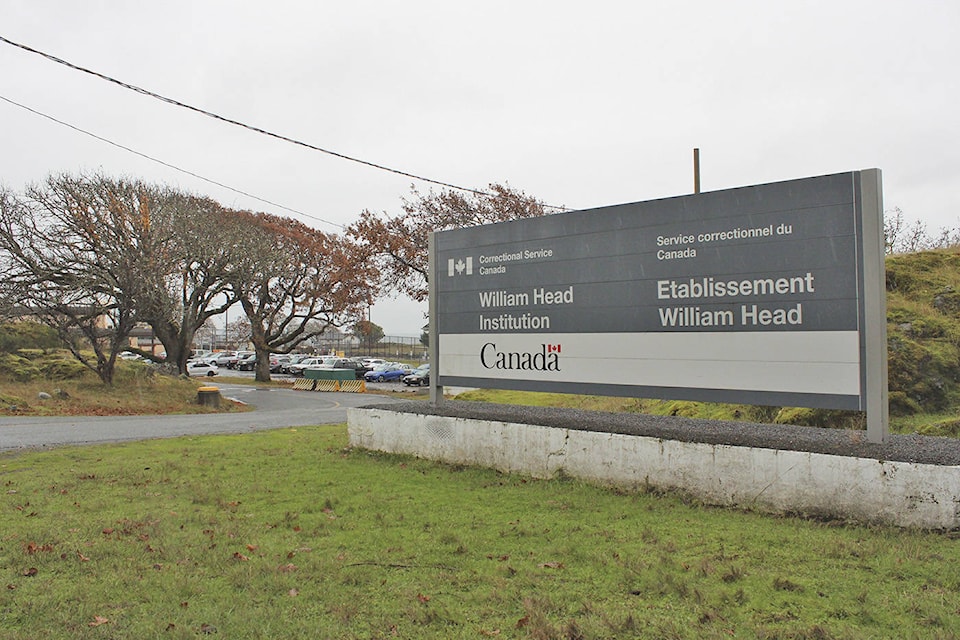Driving up the road to the William Head Institution in Metchosin, it feels more like a community than a prison.
Several houses and farms dot the roads until crossing the invisible line into federal land. A large grey sign welcomes drivers to the prison.
There are no large fences blocking the entrance and no guards – things that normally come to mind when people think of prisons. Inmates don’t wear orange jumpsuits and there are no mess halls were they gather to eat three meals a day.
In fact, William Head is the opposite of stereotypical prisons that are shown in movies and TV shows.
Currently home to 190 inmates, the minimum security prison – which is the only federal penitentiary on Vancouver Island – focuses on public safety, managing the risk that inmates pose to the public, the rehabilitation of inmates, and helping them become contributing members of society.
“We’re the last step before they become your neighbour or my neighbour,” said warden Trent Mitchell to a group of 14 people from the WestShore Chamber of Commerce who toured the facility earlier this week. “It’s meant to mirror community life with a bit more structure.”
RELATED: Prison program builds bridges
The length of one’s sentence determines the type of facility they wind up in. If someone is convicted and sentenced to two years less a day, they are entered into the provincial system. If they receive a sentence of more than two years, they are entered into the federal system.
Inmates in the federal system are assessed at the Regional Assessment Centre and then placed at the appropriate security level. Those who have committed violent crimes are often initially placed in a maximum security institution and then, once they work their way through a correctional plan, are able to move to medium or minimum security institutions over time. Once they prove they are a low risk of escaping and a low risk to the public, they can then be transferred to minimum security correctional institutions, such as William Head.
William Head has had its share of inmates since it opened in 1959, from murderers to rapists and pedophiles to those who have committed break and enters.
At William Head, where the average age of inmates is about 37 years old, inmates begin the process of rehabilitation and get a taste of life outside prison walls.
Inmates live in red-brick duplexes roughly 1,200-square-feet in size with four other inmates, have their own bunks, and share washroom and kitchen facilities. As a household, inmates must decide what meals they’re going to cook for the week and are given a catalogue of food to choose from. Every Thursday they pick up their groceries, and cook and clean throughout the week.
RELATED: Inmates’ performances support sick children
The prison also keeps inmates busy throughout the day. William Head has become known for its roughly 4,000-square-foot hobby shop, where inmates can get experience in leather, metal and wood work, among other things. Some inmates sell their work online with the money going into a trust account for inmates to purchase materials, tools for hobby work and clothes, or donate items to charity as well.
There is also a replica longhouse known as the Salmon House, where aboriginal inmates looking to reconnect with their culture can learn from elders. In addition, there are a number of educational and vocational programs, where they work in the community, that teaches inmates life and job skills – all with the goal of releasing them back into the community and reducing the risk that they’ll re-offend.
Assistant warden Anthony Baldo said it’s the “hope we don’t see you again” attitude that has led to many successful reintegrations of inmates back into the community.
“We see offenders more as clients or customers, that’s what they are. What does the offender need?” he said, noting about 96 per cent of the men at William Head will, at some point, be released back into the community. “We provide a service to 190 customers who will take that service back into the community … We’re trying to teach good citizenry. It’s nothing complicated. What do you in the community is what we do here, just a bit differently.”
